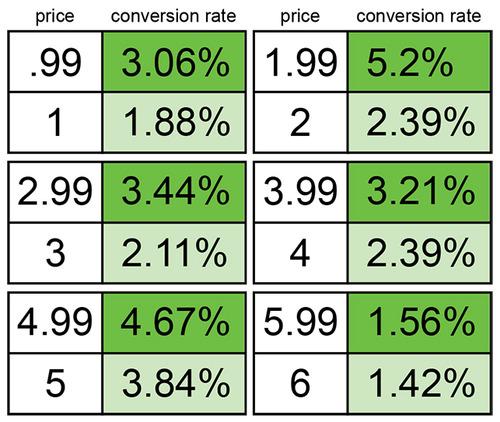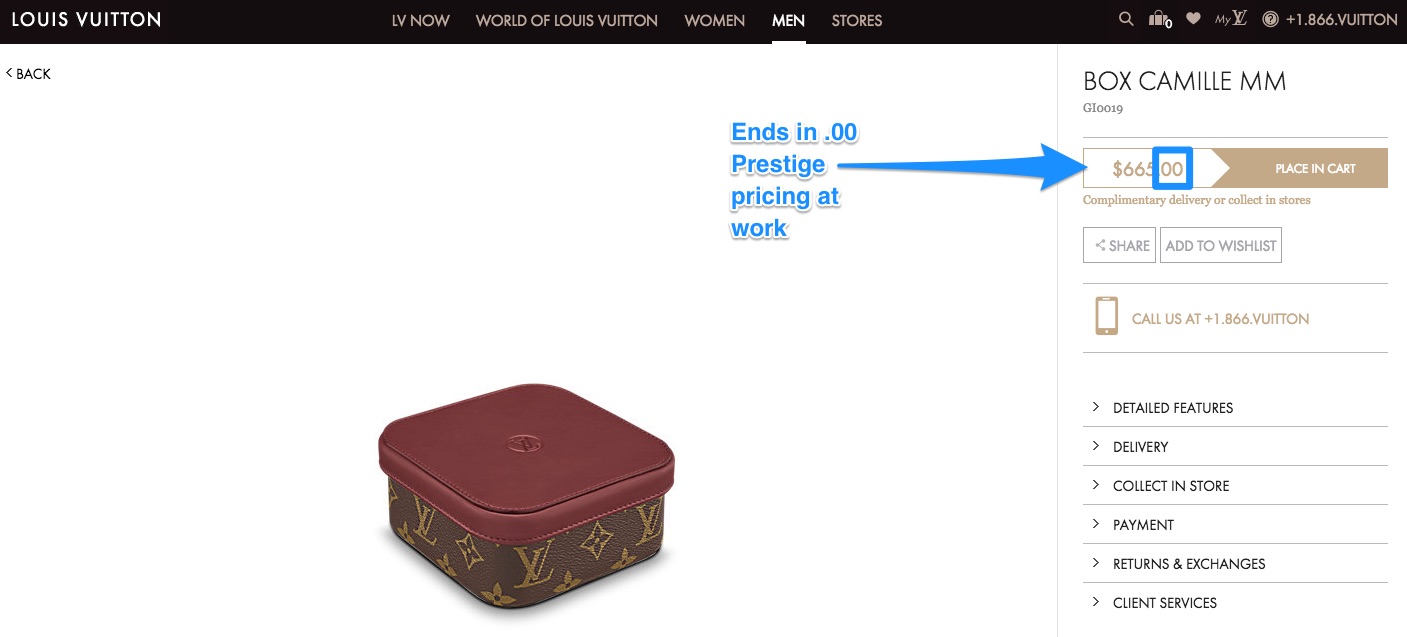We’ve all heard the stories about a humble split test bringing in more subscriptions, more leads, more downloads, and more growth. Or how changing one word brought in more than $300,000 in revenue.
While that kind of result is a little uncommon, split or A/B testing is undeniably beneficial to your website, your marketing, and your business. Whether you’re an SMB or an enterprise multinational, hypothesizing and testing simply makes you better.
You know you can test your landing pages, your email marketing, your PPC campaigns, your copy, your images, your design, and your colors. And as an added bonus, it doesn’t take long to master A/B testing and make it an everyday part of your business decisions and goals…even if you’re an absolute novice to start.
In fact, everyone is on the split test bandwagon. From the smallest of the SMBs to industry giants like Amazon and Walmart, there is no company or industry that doesn’t get actionable insight from it — from finance to SaaS, from bloggers to entrepreneurs, from A to Z.
And that, of course, includes those of you in the expanding e-commerce game.
Split Testing and E-commerce
As a savvy and growth-minded e-retailer, you’re likely using A/B testing for a wide variety of purposes already.
When it comes to your retail platform, you can test and improve virtually every aspect:
- Test your homepage: The inclusion of trust badges, navigation menu and links, layout, dropdown menus versus elaborate lists, slider versus static images, video, number of columns, subscription form, colors, and your call-to-action.
- Test your product pages: Create a sense of urgency with flash sales, limited numbers, free shipping until X o’clock, include video reviews or tutorials, customer testimonials or reviews, high-quality photos and a 360-degree view, and the placement of those items. Beef up your copy, change the font, tweak the colors.
- Test your checkout funnel: Add familiar trust seals, security promises, a money-back guarantee, eliminate steps, 1-page checkout versus 2-page checkout (or 3-page checkout), the order of checkout, requiring registration, and the details you ask for.
- Test your category pages, your search results, and your thank-you page.
And that’s just the tip of the iceberg. An e-commerce store could literally test until the cows come home. There are dozens of things to hypothesize and optimize.
It works, and nearly everyone is doing it. 75% of the top 500 retailers online use it to improve their portal, ramp up their revenue, and better their customer experience.
Examples abound of retailers using split testing to improve conversions, sales, average order value, and more.
Are you in on that?
Split Testing: A Quick Review
The basic idea of split or A/B testing is to compare the performance of two slightly different versions of the same page (or email, or ad).
You have the version you’re currently using (called the control) and the version you believe might do better because of the one thing you changed (called the variant). For a set period of time (the lower your traffic, the longer you’ll want to run the test), you send half of your traffic to A, and half to B. Then you compare their performance metrics.

But you don’t just change for the sake of change. You don’t test for the sake of testing. You want to have a data-backed hypothesis beforehand. The basic steps for a successful split test include:
- Look at the existing data for the page, email, or ad under review. How is it performing?
- Set a goal for it. You might want to increase the CVR, or decrease cart abandonment, or increase sign-ups, or lower the bounce rate.
- Come up with a hypothesis for how to reach that goal. For example, you might believe that you’ll increase sales if the product page includes a video review.
- Create a variation to test your hypothesis.
- Run the test for an adequate length of time.
- Analyze the two sets of data.
- Implement the variation if it does better.
That’s it.
Let’s Talk About Pricing
As a retailer — e-commerce or otherwise — setting your prices can be the most difficult part of your business.
Many business owners make the mistake of pricing too low, believing it’ll give a much-needed boost to sales. That could happen, but it can just as easily backfire and create the impression that your products are inferior quality, cheap, and likely to break, resulting in fewer sales.
On the other hand, you might try pricing higher than your competition to create the impression of high quality and luxury. Again, that could happen…but your customers might also see it as just more expensive without any additional value. Where does that leave you? You guessed it…fewer sales.
It’s a fine line.
The perfect price point needs a lot of data to inform it: production costs, operational costs, storage and shipping costs, as well as the prices of your direct and indirect competition.
You can keep one eye on them with a service like Prisync. It’ll collect and monitor your prices and inventory while comparing it against the latest data on your competitors. Users report an average profit margin increase of 20 percent using the platform.
While a tool like that can help, there’s another often-overlooked option to zero in on the perfect price: split testing.
Split Testing and Your Prices
Pricing obviously affects your conversion (i.e. your sale) rate. Too high, too low, too many hidden fees, and on and on. It has to be “perfect.”
Your would-be customers want competitive pricing. In fact, 80% of them list it as an important feature when they’re making a purchase decision.
Prices rise, prices fall. They fluctuate based on supply and demand, the behavior of your competition, even the time of year.
Keep on top of it with a concrete split testing strategy.
Here are a few ideas and hypotheses to get you started on the path to price perfection.
Charm Pricing
Hypothesis: Changing my prices to end in 99 will increase sales.
This tactic is the practice of ending prices with either 9, 95, or 99. You’ve probably noticed it on plenty of e-commerce websites and at other retailers.
Gumroad found that products with a .99 price outperformed those ending .00 across the board.

It usually works, but there’s a rather important caveat: the leftmost digit needs to come down by one.
This is called the Left Digit Effect. When we compare $3.00 to $2.99, our brain automatically registers the perceived cost of the first as three dollars, and the second as two dollars…despite the fact that the actual difference is only one cent.
Charm prices increased sales by an average of 24% in studies conducted by William Poundstone for his book Priceless. Will it work for you? There’s only one way to find out (hint: split test it).
Prestige Pricing
Hypothesis: Rounding my prices to the nearest .00 will improve my conversion rate.
The opposite of charm pricing is known as prestige pricing. And it can work too…depending on the type of products you’re selling.
Most of our buying decisions are based on emotion first and logic second. But some items — say a new laptop or smartphone — depend a bit more on logic than others. We research, compare, check out features, read reviews, ask for recommendations, and so on. We want to get the best product for the best price (charm pricing works great here).
But other products are much more of an emotional purchase. Luxury goods fall into this category. We buy them not because we necessarily need them, but because they give us an emotional boost (make us feel good, elevate our status, and so forth). This is where prestige pricing can work marvels.
Our brains process prices ending in .00 more easily, and that allows us to stay focused on the emotional wallop that the purchase will bring us. We’re free to stay focused on the good feeling rather than bothering with “complicated” numbers. The price just feels good.
Check out luxury brands like Louis Vuitton and see for yourself.

Are your products under the luxury, emotional umbrella? Test prestige pricing to discover the answer.
Anchor Pricing
Hypothesis: Listing the original price with the discounted price will result in more sales for my current promotion.
Anchoring is a common cognitive bias. When making a decision, we tend to rely heavily on the first piece of information we’re given.
That can work in your favor when pricing in general, and especially during sales and promotions. Web hosts — like Bluehost, pictured below with its “normally $X.XX” pricing — do this all the time.

Because of the anchoring effect, we tend to think of the original (i.e. first) price as the true value of the product, so the discounted price seems like that much more of a deal. We all love a deal!
By including an original, list, or manufacturer’s suggested retail price, we set the perceived value of the item. Any price below that makes the decision to purchase very easy.
Experiment with placement, font, color, and size of the original and discounted prices for maximum effect.
Installment Pricing
Hypothesis: If I break my prices into X equal payments rather than one large sum, more people will purchase.
You’ve seen this one on late-night infomercials and the shopping channel. Why? Because they know what motivates people to open their wallets.
Installment payments let even an expensive item seem very affordable. Instead of $750, it’s just ten easy payments of $75, or five of $150, or three of $250.
This is another strategy that leans on the anchor effect. The first — or in this case, full — price sets the perceived value, while the individual installment amount is a steal by comparison.
Some buyers are even willing to pay a higher price for the convenience of installment pricing. Will it amount to greater sales for you? Maybe, maybe not. But it can’t hurt to test and know for sure.

Discount the “Right” Way
Hypothesis: Discounts expressed as a percent are more effective than those expressed as a dollar amount.
Everyone loves to save money. Sales, promos, discounts, and coupons work for that very reason.
But are all discounts created equal? Test and discover.
You can indicate a discount of a percent off, or by the dollar amount saved. One will likely be more effective at motivating people to buy than the other.
But which one will work for you?
Only a split test can tell you definitively, but as a rule of thumb, you want to express the discount in whatever way makes the number bigger. Oversimplified? Perhaps…but we love to save big.
If your product is less than $100, the percent off will be the bigger number. Which sounds better: Save $7, or 25% off? Both reflect the same discount on an item normally sold for $28, but I’d wager dollars to donuts that more people would respond to the 25% off label.
If your product is more than $100, do the opposite. The actual dollar amount saved will always be the more impressive figure. Save $75, or 33% off?
Split test to determine what your customers would rather see.
Other Ways to Test Pricing
You don’t have to stop there. Test tax in versus tax out, volume discounts, combo pricing, higher pricing that includes shipping, lower pricing with shipping extra, and more.
The Tools of the Trade
Now that you know what to test, you need to actually test it. There are many fine tools and services out there to make it fast, easy, and convenient, including:
- Google Analytics (located under Behavior > Experiments)
- Unbounce (landing page builder with A/B testing capabilities)
- Visual Website Optimizer
- Optimizely
In WordPress, you can opt for a simple plugin:
Over half of all e-commerce traffic is mobile traffic, so make sure your tool of choice is set up for mobile testing.
Want to test your intuition? Check out Behave (formerly called Which Test Won?) and test yourself against actual split test results. Can you pick the winners?
Ultimately, you don’t want to always be testing every little thing, but a few choice tests can deliver big results.
Big results are the name of the game. Big profit, big growth, big improvements.
And all from the little split test.
Have you tried split testing your prices yet? What tools and approach did you take? Let me know your thoughts on social media.
Image Credits
Featured Photo: Pixabay
In-post Photo #1: Maxime Lorant/Commons.wikimedia.org
In-post Photo #2: Price Chart/Gumroad.com
All screenshots taken by Aaron Agius, March 2017





![AI Overviews: We Reverse-Engineered Them So You Don't Have To [+ What You Need To Do Next]](https://www.searchenginejournal.com/wp-content/uploads/2025/04/sidebar1x-455.png)